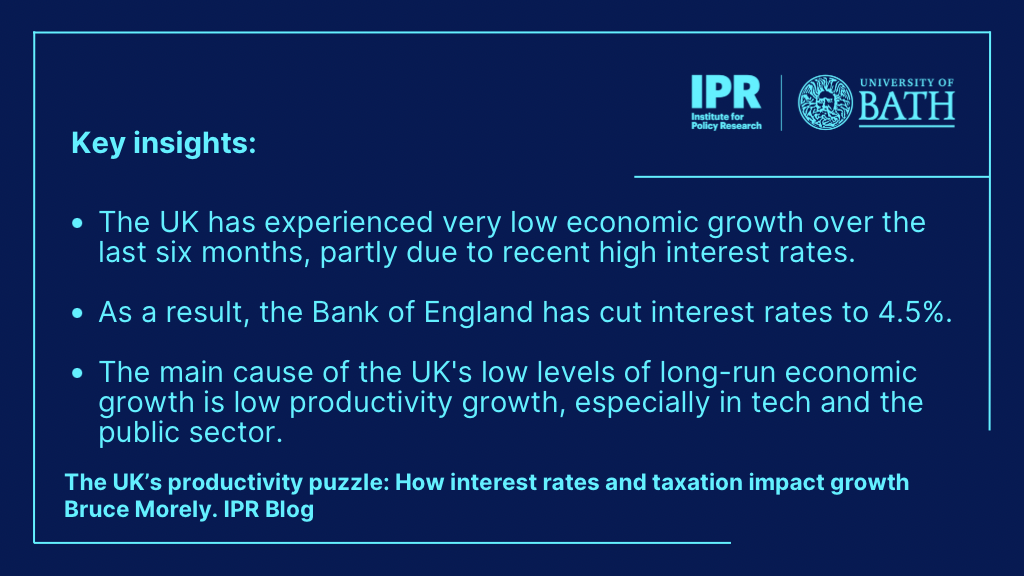The Bank of England cut interest rates to 4.5% to boost the UK’s sluggish economy, balancing growth with rising inflation. Low economic growth stems from high interest rates, increased taxes, and low productivity. Long-term recovery requires investment in technology, skills, and public sector productivity. This blog explores the challenges of monetary policy, inflation, and economic growth.
Dr Bruce Morley is a lecturer in the Department of Economics in the University of Bath. His main research interests are in macroeconomics and finance, especially international finance, where he has done most of his research into the exchange rate and monetary policy, including analysing risk and the risk premium in the exchange rate.
As expected, the Bank of England has cut interest rates by 0.25% to 4.5%, although two committee members voted for a 0.5% cut. This was a fine balancing act, as the low economic growth recently suggests interest rates should be cut to stimulate the economy, but on the other hand wage inflation is high and expectations on inflation have risen. The inflation rate is expected to exceed 3% later in the year, above its upper band and meaning the Governor needs to write a letter to the Chancellor explaining how they will bring it down.
The UK has experienced very low economic growth over the last six months, across all sectors of the economy. This is partly due to recent relatively high interest rates, although they have now started to fall, which has negatively impacted those with flexible rate mortgages and those with fixed rate mortgages needing to renew their deals. This has been an inevitable consequence of a period of historically very low interest rates since the financial crisis of 2008, with consumers taking on debt that they could afford with interest rates at 0.5% but have struggled as interest rates increased to 5.25%.
The other reason for the low economic growth rate is the recent increase in taxes and the effects of consumers and producers anticipating further increases in April. As a result, consumers have less disposable income, producing a fall in aggregate demand and short-term economic output. But tax rises of all forms also have been shown to facilitate a fall in long-run economic growth. However given the size of the budget deficit and the high levels of UK debt, it would be difficult for the government to reduce taxation in the near future without borrowing more and forcing up long-run interest rates which affect investment, unless they cut government spending.
The main causes of the UK's low levels of long-run economic growth are it's low productivity growth, although this has been a problem since the financial crisis. To improve productivity the UK needs to improve investment in more technologically advanced plant and machinery as well as skills. For instance the UK has lower levels of investment in robotics than its main competitors. But of most concern is productivity in the public sector, which according to the ONS is over 6% lower than the pre-pandemic levels in 2019.
All articles posted on this blog give the views of the author(s), and not the position of the IPR, nor of the University of Bath.
Respond





